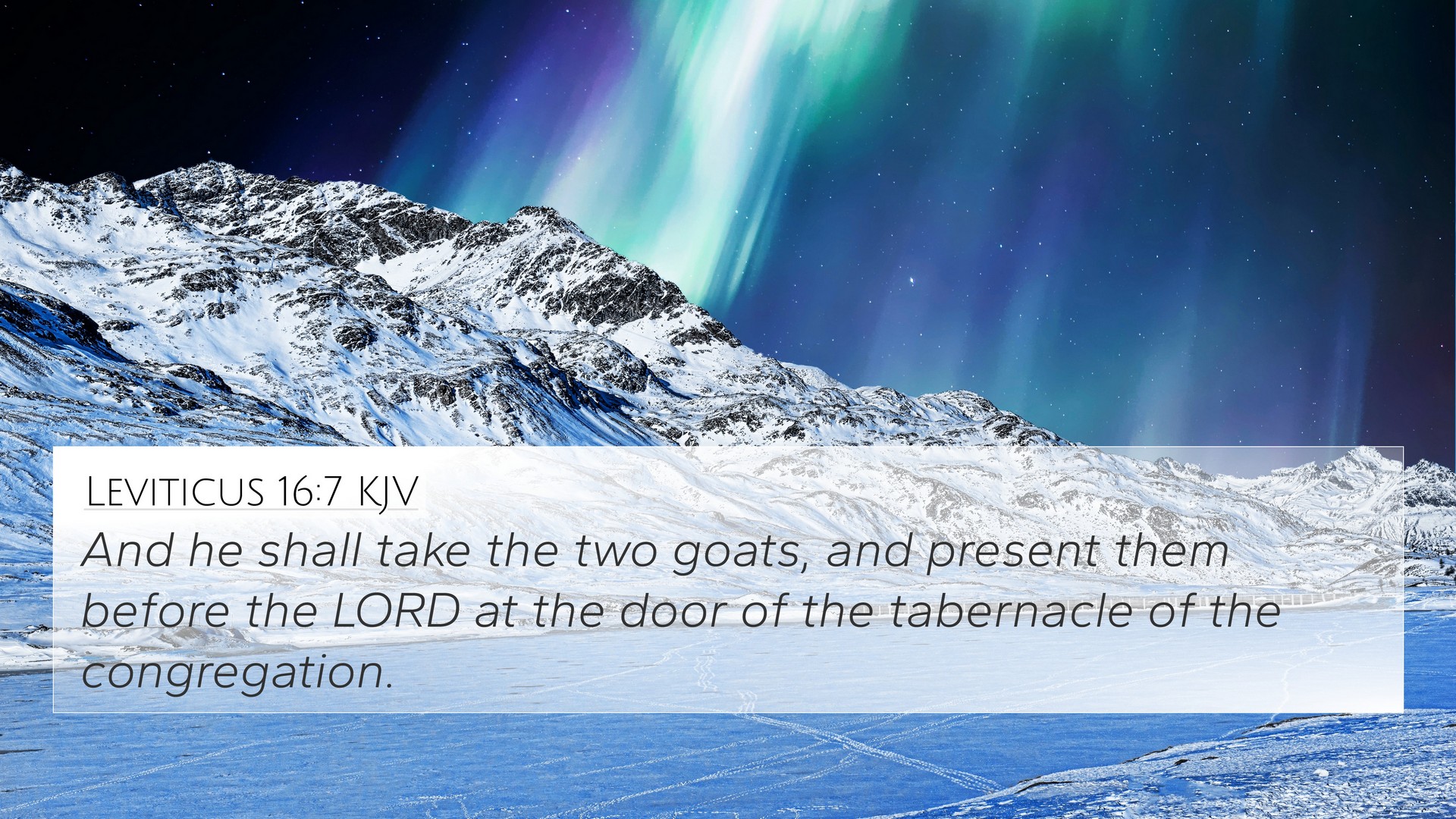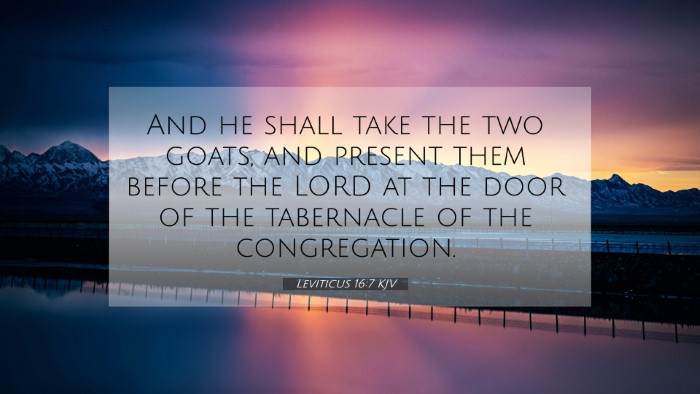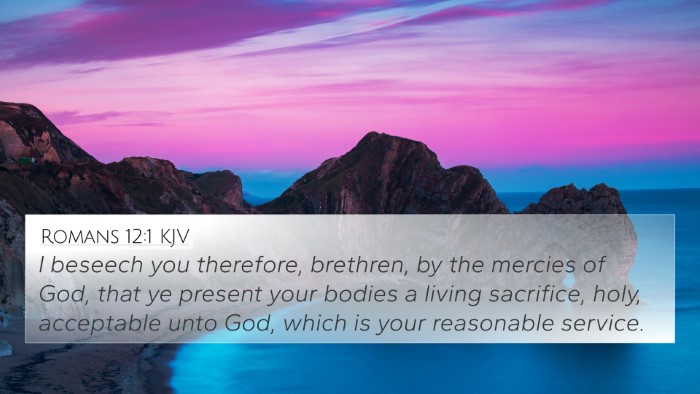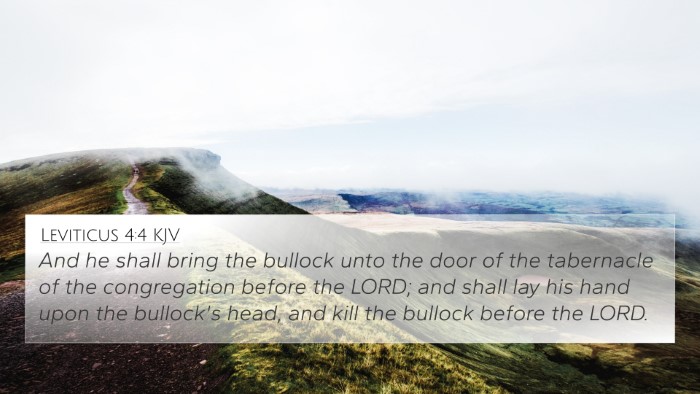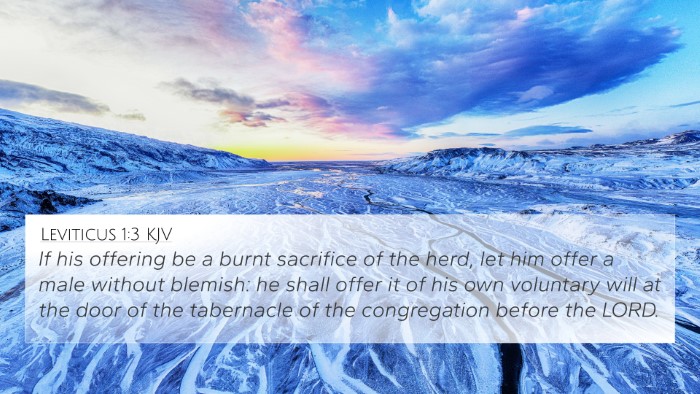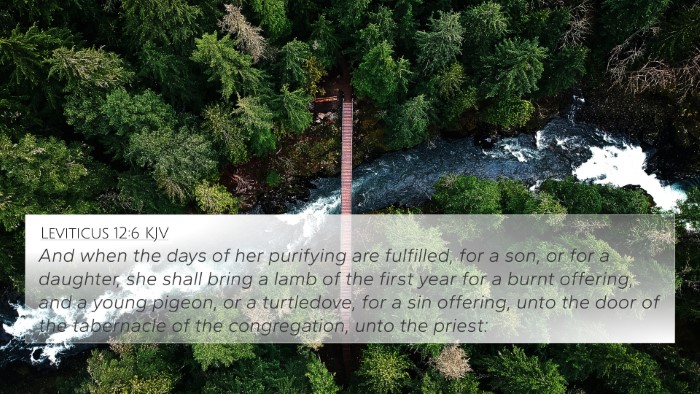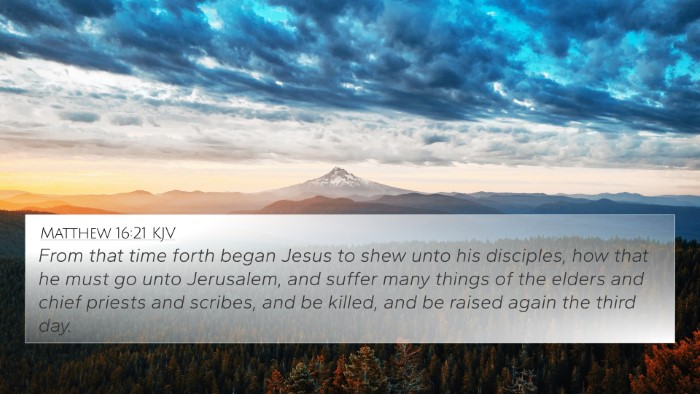Understanding Leviticus 16:7: Insights from Public Domain Commentaries
Leviticus 16:7 states, "And he shall take the two goats, and present them before the Lord at the door of the tabernacle of the congregation." This verse is pivotal in the context of the Day of Atonement, revealing profound theological implications regarding sacrifice, atonement, and sin.
Summary of Leviticus 16:7
This verse describes the initial step in the ceremony of the Day of Atonement (Yom Kippur), where two goats are presented before God. This act symbolizes the taking of the community's sins and the process of reconciliation with God.
Theological Significance
The two goats represent two distinct aspects of atonement:
- The Sin Offering: One goat is sacrificed as a sin offering, symbolizing the substitutionary atonement for the people’s sins.
- The Scapegoat: The other goat is sent into the wilderness, carrying away the sins, highlighting God's removal of sin from His people.
Commentary Insights
Matthew Henry's Commentary
Matthew Henry elaborates on the symbolism of the goats in Leviticus 16:7, emphasizing that the two goats together illustrate full atonement. He explains that the goat for the Lord signifies not only the removal of sin but also the necessity of sacrifice for reconciliation with God.
Albert Barnes' Notes
Albert Barnes provides interpretation focusing on the representations of the goats, identifying them as shadows of Christ's ultimate sacrifice. He notes that cross-referencing this with New Testament teachings reveals that Jesus embodies both roles—sacrificing Himself for sin and bearing our iniquities away.
Adam Clarke's Commentary
Adam Clarke discusses the importance of this ritual within the Jewish tradition, noting its communal aspect. He stresses the ceremony's role in linking the people together in understanding sin and repentance, thus serving as a precursor to the atoning work of Christ as mentioned in various New Testament verses.
Bible Verse Cross-References
Leviticus 16:7 shows significant connections with other Bible verses that expound on themes of atonement, sacrifice, and sin. Here are some related passages:
- Hebrews 9:7: Discusses the importance of sacrifice in the context of atonement.
- Isaiah 53:6: Highlights the theme of the scapegoat by indicating that the Lord laid upon Him the iniquity of us all.
- 1 Peter 2:24: Affirms that Christ bore our sins in His body, paralleling the sacrificial goat.
- Romans 3:25: Talks about God presenting Jesus as a propitiation, connecting Christ to the sacrificial system.
- Leviticus 4:27-31: Focus on individual sin offerings, which resemble the atonement in Leviticus 16:7.
- Exodus 30:10: Pertains to the annual atonement, thereby reinforcing the significance of the Day of Atonement.
- John 1:29: John the Baptist identifies Jesus as the Lamb of God, tying Him to the sacrificial system.
Connections Between Bible Verses
The connections between Leviticus 16:7 and other scriptures illustrate a cohesive narrative about sin and redemption found throughout the Bible. Some notable connections include:
- Psalm 103:12: "As far as the east is from the west, so far has he removed our transgressions from us."
- Colossians 2:14: "By canceling the record of debt that stood against us... he set aside, nailing it to the cross."
- Matthew 27:46: Christ’s cry on the cross resonates with the weight of sin discussed in Leviticus.
Thematic Bible Verse Connections
Leviticus 16:7 not only stands alone but also fits into a broader theological framework. Key themes include:
- Atonement: The fundamental theme of atonement runs through Leviticus, extending to the New Testament with Christ’s sacrificial death.
- Substitution: The concept of substitutionary atonement, embodied in the goats, highlights how Christ takes our place.
- Sin and Redemption: Every connection between these verses strengthens the narrative of sin leading to the need for redemption.
Tools for Bible Cross-Referencing
Cross-referencing is an essential tool in understanding the fullness of Scripture. Some helpful methods include:
- Bible Concordance: A useful resource for identifying verse relationships.
- Cross-Reference Bible Study: Engaging with several texts to gather thematic connections enhances comprehension.
- Bible Chain References: Following a chain of related verses to uncover deeper meanings.
Summary
Leviticus 16:7, with its dual goat symbolism, is a profound portrayal of the atonement process initiated on the Day of Atonement. The insights from Matthew Henry, Albert Barnes, and Adam Clarke emphasize that this Old Testament rite foreshadows the ultimate sacrifice made by Christ, connecting believers from both the Old and New Testaments. Understanding these connections enriches one’s biblical knowledge and offers profound spiritual insights.
